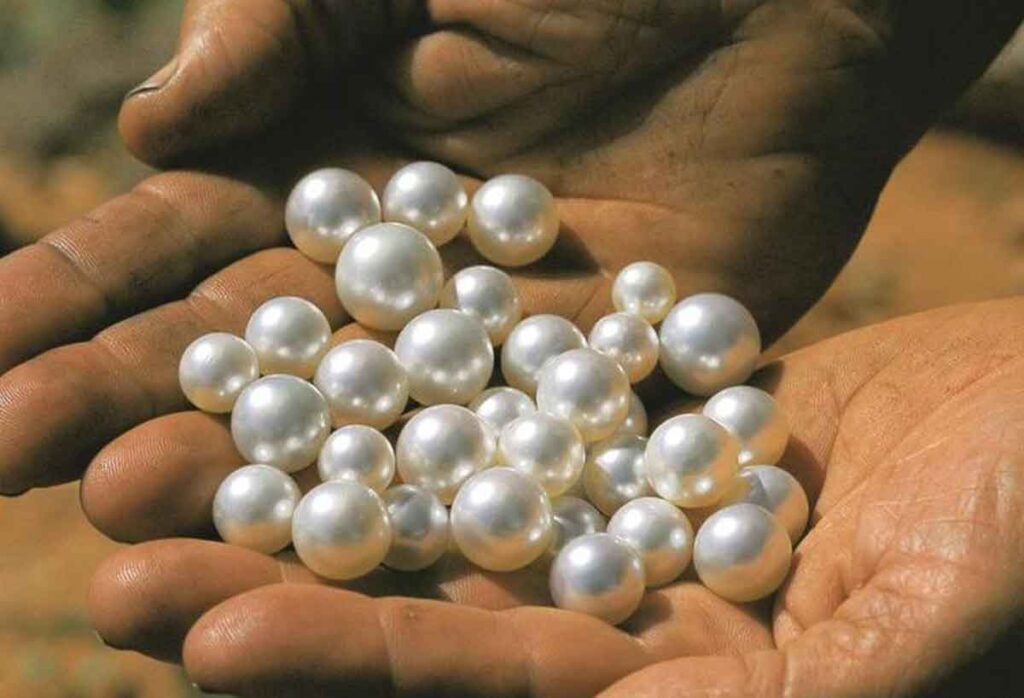Have you ever fondled that string of pearls around your neck and wondered how those lovely gems came to be?
If you are curious enough, then jump in and have a tour of (re) discovery about this wonder of nature. You will love them more at the end of the line.
What You Should Know About Pearls
First, pearls are considered the oldest gem. No records exist on when and where they came to be. But evidence suggests that man has been using them as adornments long before someone starting writing history. Here are a few:
- Pearls were presented to Chinese royalty as early as 2,500 BC
- Pearl jewelry was found in the sarcophagus of a Persian princess dating back to 420 BC.
- In the 1st century BC, Julius Caesar passed a law limiting the wearing of pearls to the ruling elite.
What are Pearls?
So what are pearls? And why have they gripped man’s attention since antiquity until now?
And made Kokichi Mikimoto (more of him later in the article) quip; “My dream is to adorn the neck of all women around the world with pearls.”
Google puts pearls definition as “a hard, lustrous spherical mass, typically white or bluish-gray, formed within the shell of a pearl oyster and highly prized as a gem.”
It says nothing much, does it?
Here’s a better one: “a pearl is a gem that is formed when an irritant such as a parasite or shell fragment, is accidentally lodged in an oyster’s soft inner body, causing it to secrete a crystalline substance called nacre, which builds up around the irritant in layers until a pearl is formed.”
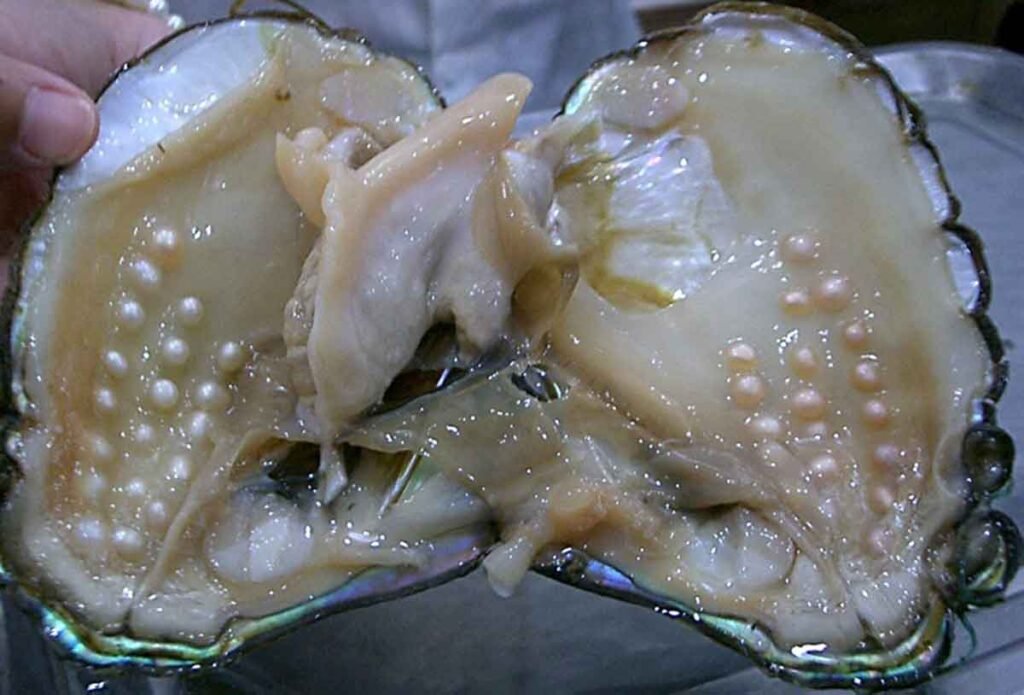
Please note that though all mollusks can form pearls, they are more common in what is called the “pearl oysters,” which include the genus Pinctada.
The first known source of natural pearls was the Persian Gulf—where it was said to have been formed by dewdrops that were swallowed by oysters when they fell into the sea. Myths aside, the region became the center of the pearl trade and the source of its wealth long before oil came.
The Arabs’ monopoly on the pearl business was broken when the gem was discovered in South and Central Africa in the 15th and 16th centuries.
But despite these new sources, the demands in Western Europe, where women of nobility and means wore elaborate pearl jewelry items, not unlike the one in this Maison Birks review started to outstrip the supply driving the prices sky-high.
Then came renowned jeweler Kokichi Mikimoto.
In 1893, Kokichi succeeded in making the world’s first cultured semi-spherical pearls. To improve his creation, he partnered with Tokichi Nishikawa and Shinpei Mise and gave the world what we have now—cultured spherical pearls.
How Many Types of Pearls are in the Market
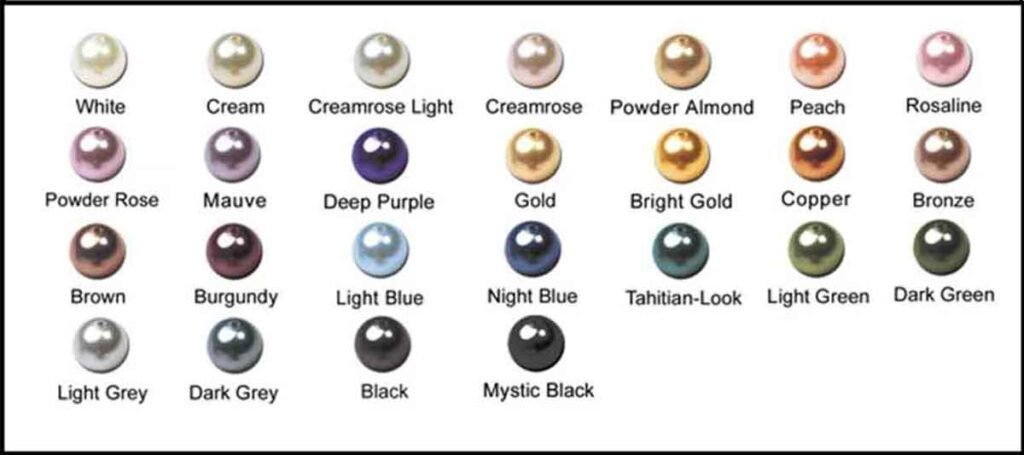
There are basically two kinds of pearls: natural and cultured.
But since natural pearls are so rare, cultured peals dominate the market. Of this, there are four types:
Akoya
This is a saltwater cultured pearl grown mostly in Vietnam, China, and Japan. Of the three, Japan is the acknowledged leader in consistently producing the most beautiful pearls in the world.
Sizes range from 2.0 mm through 9.0 and 9.5. The pearl is famous for its white variety, as well as its natural silvery-blue and golden hues. Price starts at $ 75.00 to thousands of dollars – depending on the type, size, and quality of the pearls. Akoya is common in the U.S. and western markets.
South Sea
South Sea pearls are often called “Queen of Pearls” because of their gorgeous pallete of golden and white colors—the unmistakable mark of ultimate luxury in fine jewelry.
This pearl type is bred in Pinctada Maxima saltwater oysters and is farmed mostly in the Philippines.
South Sea pearls are big. Sizes range from 8.0 to 9.0 mm, up to 14.0 or 15.o. They come in shades of white to golden—depending on the types of oysters. They are perfectly round and are rather pricey – from $ 200.00 up to a few thousands of dollars.
Tahitian
When it comes to black pearls, the best are the Tahitians. No piece of jewelry is more exotic than a strand of Tahitian pearls. Black pearls are cultivated in numerous countries but they are not as beautiful as those cultured in the saltwater areas of French Polynesia, particularly Tahiti.
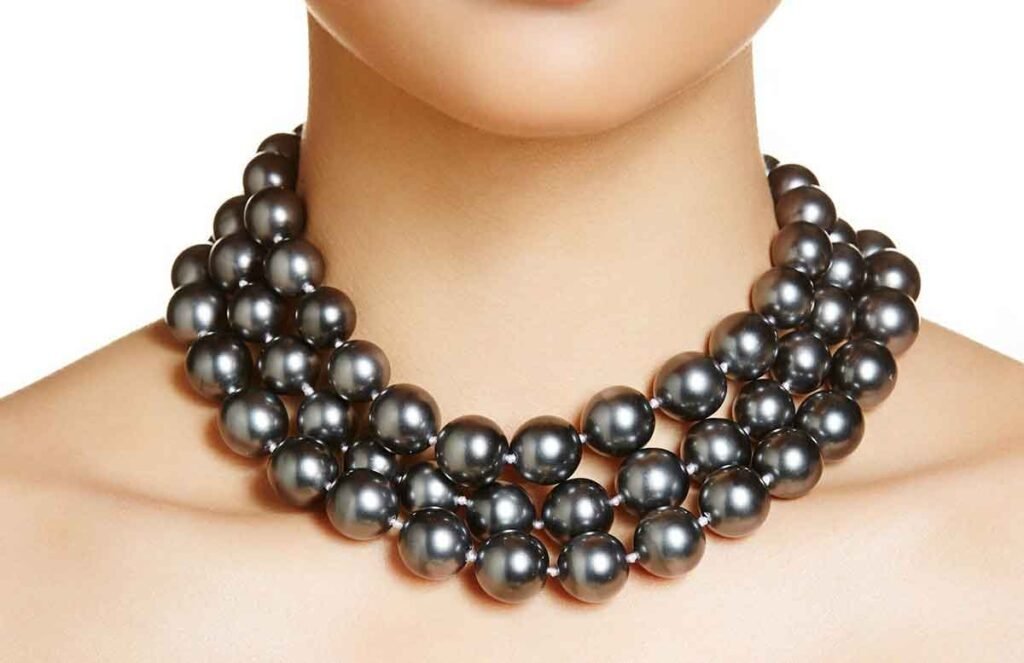
The primary body colors of Tahitian pearls range from pale dove grey to very dark charcoal grey. And they shimmer with gorgeous, iridescent overtones like Peacock, green blue-green, silver, cherry, and more.
Their sizes range from 8.0 to 9.0 mm, upwards to 15.0 and 16.0 Price starts at $ 80.00 upwards.
Freshwater
Almost 99.99% of this pearl type is cultured in China’s freshwater lakes and natural or man-made ponds. They are very popular because they come in a variety of sizes, shapes, and colors.
Freshwater pearls range in size from 2.0 – 3.0 mm, through 11.0 to 12.0 mm. Their colors range from pastel shades of pink, peach to lavender, and white. Their shapes are as varied, too, i.e., spherical, symmetrical, and baroque.
Prices can be as low as $ 30 to as high as a few thousand dollars—depending on size, quality, and design.
Sea of Cortes
This pearl type is the rarest of all cultured pearls. And, like the Tahitian pearl, they are also naturally black.
The Sea of Cortes pearl is only farmed in one location—The Perlas del Mar de Cortes in Guyamas, Mexico. which harvests less than 4,00o pearls a year. And they come in various shades or overtones of black, such as blue-green, green, pistachio, mauve, aubergine, copper, lime, and rose.
Their sizes range from 8.0 – 9.0 mm up to 11.0 – 12.0. Round Sea of Cortes pearls is very rare. More common are symmetrical baroque or smooth tear-drop shapes.
So, if you are tempted to wonder why are pearls so cheap, wonder no more. Yes, you can get pearl jewelry for a dollar—depending on the size, type, and quality. But by and large, pearls are not so cheap—especially if you are contemplating buying a South Sea pearl, the Rolls Royce of pearls.
Which Pearl is Expensive?
This question can be looked at in two ways: as a gem or as a jewelry item. Luckily, you can have it both ways.
The most expensive natural pearl costs over $ 1 million. This honor belongs to the 35-kg gem found by a lowly fisherman off the coast of Palawan Island, Philippines more than 10 years ago.
While that may be a fluke and does not represent actual market realities, either the South Sea or the Sea of Cortes would qualify as an expensive pearl.
But as a jewelry item, the La Peregrina necklace, sold at an auction for $ 11.8 million, is very, very, very expensive.
This amount may leave a quizzical look on your face. Here’s why…
Not many jewelry items, of any kind, have captured the world’s excitement, enthusiasm, or obsession over that of the La Peregrina—the most perfectly symmetrical pearl ever found. The beauty of pearls such as this truly make for wonderful creations, such as the one in this Fossil review.
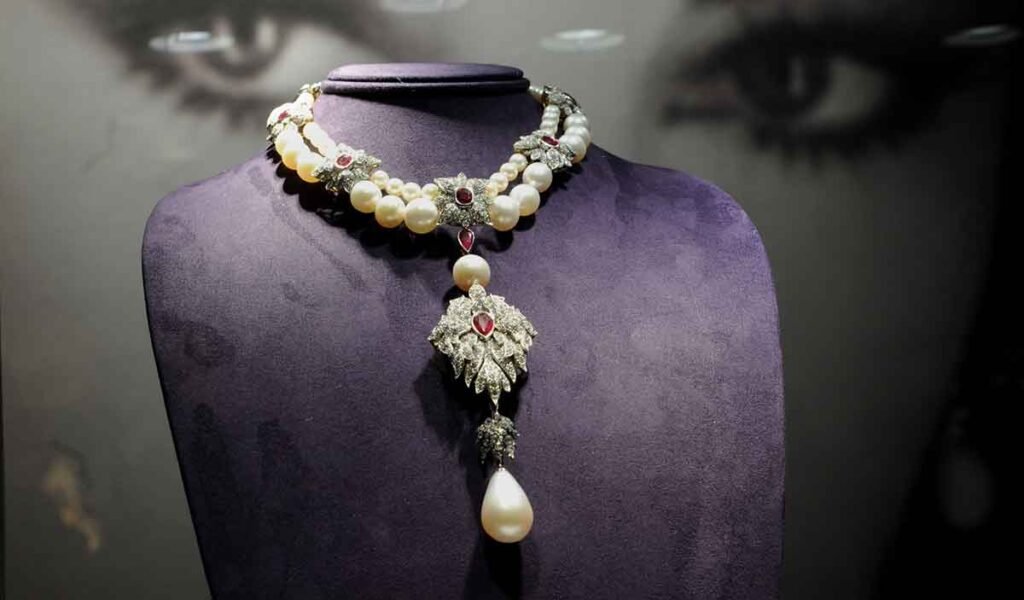
The La Peregrina story
Its story unfolded in 1513 when an alleged African slave found it off the coast of Panama. Dutifully, he turned it over to his master, Don Pedro de Temez, administrator of Panama at that time. Oh, lest we forget, the slave was freed as a reward for handing over such precious find to his master.
De Temez then hand-carried the pearl back to Spain and gave it to King Philip II who, in turn, gave it to Queen Mary I of England.
From there, it changed hands as many times as it zigged and zagged between the royalties of Spain, England, and France.
Finally, it landed in the Hamilton family of England in the 1800s. They held it until 1969 when they had it auctioned off to Sotheby’s, London. The famous actor, Richard Burton, fancied it and bought it for $ 37,000 as a Valentine’s Day gift to his wife, Elizabeth Taylor.
Ms. Taylor cherished the necklace so much that she commissioned Al Durante of Cartier to do some make-over. It remained with her until her death in 2011. A year later, it was auctioned off at Christie’s and was bought at such an astronomical amount.
So how much are pearls worth? They can be worth a buck or millions of dollars. Just like anything else, pearls price is often not determined by market forces, but by its significance; the stories behind it.
What is so Special About Pearls?
Compared to other gemstones, pearls are not only special, but they are also unique.
They are special because as the late Jaqueline Kennedy Onassis said, “Pearls are always appropriate (for just about any occassion).”
Jackie Kennedy was a pearl fan. For her, pearls complement many different styles. She often incorporated large pearl earrings and necklaces into her colorful outfit. So can you.
Oh, she loved pink pearls. They accentuated her extremely chic style.
And they are unique because they are the only gem material formed and found inside a living creature. They support sustainability. Unlike the other gemstones that have to be dug out from the ground, separated from the dirt that encloses them, then polished and ground, pearls are simply taken out of the oysters that created them, then washed. No cutting or grinding needed. They don’t even kill their oyster hosts.
They are as stunning as they come.
Pearls are as full of meanings as any other gemstone.
Meanings of Pearls
Ancient societies symbolized pearls as the moon, imbued with magical powers. The Chinese believed that pearls protect a person from fire and dragons. Other societies relate them to chastity and modesty. And in Victorian England, small tear-shaped pearls were worn when mourning for a departed beloved.
While these symbolisms have not totally vanished, contemporary man has come with not just a single pearl meaning and symbolism somewhat akin or parallel to those held by their ancient predecessors. For example, in Taoism, Buddhism, and Hinduism, the “flaming pearl” symbolizes man’s inner wisdom and strengthens his connection to the diving energy of the cosmos.
Pearls help the wearer to be introspective—make him discover his true self; his true purpose in life.
And since they come in various colors, so do their meanings. Here’s a rundown:
White pearls
This is the predominant color used in any kind of pearl jewelry today. And for a good reason. White symbolizes innocence, beauty, sincerity, and new beginnings. That’s why it is classic wear for wedding ceremonies.
Black pearls
Are the most mysterious of all colored pearls. That being the case, it symbolizes mystery, independence, strength, and wealth. Black pearl jewelry items are perfect for women whose styles are on the bold side.
Pink pearls
They symbolize energy, success, fame, romance, and good fortune. They look soft and romantic. Pink pearls make perfect jewelry items for gifting.
Purple pearls
Conveys wisdom, artistry, complexity, nobility, and passion. They are great for those in the teaching and philosophy professions where in-depth education is a must.
Blue pearls
Represent truth, tranquility, trust, and courage. It is the perfect gift for a person who needs strength in life or appreciates peace and tranquility.
Green pearls
Absolutely beautiful and unique, they represent balance, nature, hope, growth, and renewal. This is a motivating pearl color for those who are about to start a new chapter in her life, or on a journey of personal growth.
Yellow pearls
This is the color of creativity, optimism, clarity, and happiness. The cheerful yellow is good for those who are living their lives to the fullest.
Gold pearls
Just like anything related to gold, or are golden, it represents wealth, prosperity, and good fortune.
Chocolate pearls
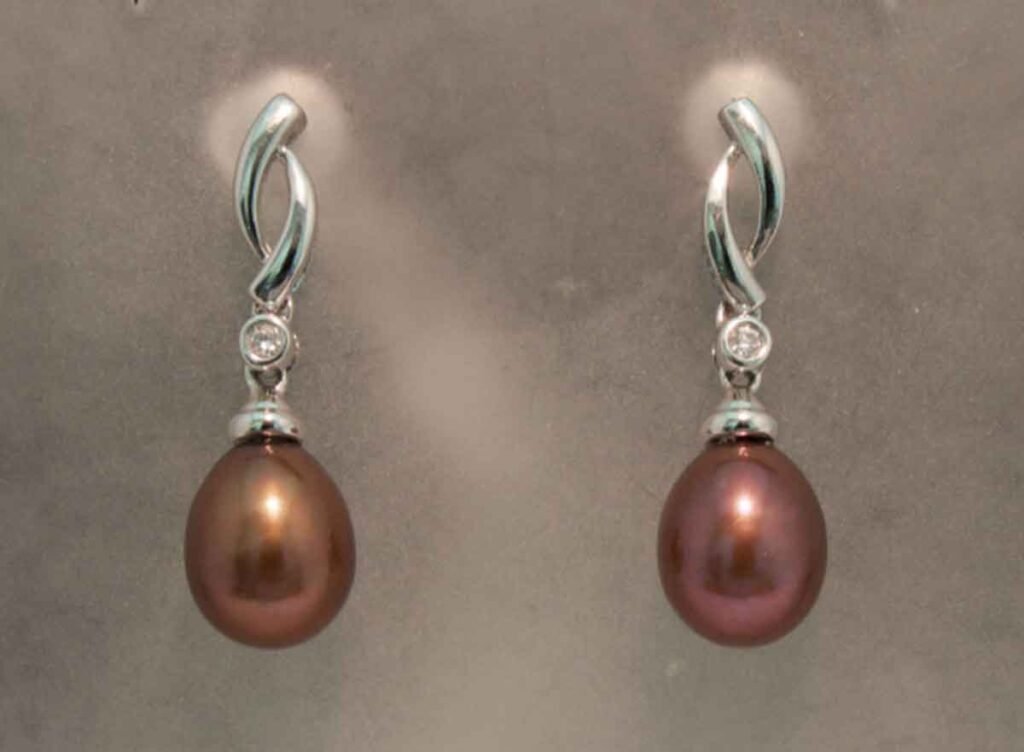
They are rich and luxurious-looking, they symbolize harmony and dependability; healing, comfort, and protection. A pair of chocolate pearl earrings make a perfect gift for people you rely on; those who help you get through your ups and downs in life.
So what color and pearl meaning appeal to you most? Most regrets in life are not due to grave mistakes in the past, but to not being able to live the life they wished for.
Pearls have been used as jewelry items since ancient times. Through the years, this unique and spectacular gem has never lost its luster in the hearts and minds of pearl-overs like Grace Kelly who said, “The pearl is the queen of gems and the gem of queens.”
You may never be a queen, but nothing is stopping you from having pearl jewelry fit for a queen.
And we’re done here. We hope that you have learned a thing or two about pearls and how they impact their wearers. Now, if you’re curious about how gemstones can bring you luck, check out our article “Get Lucky: How Gemstones Can Bring You Fortune and Luck.”
